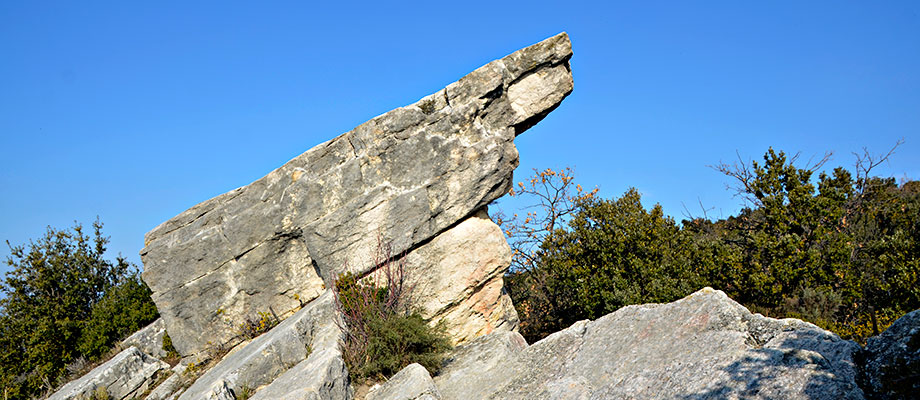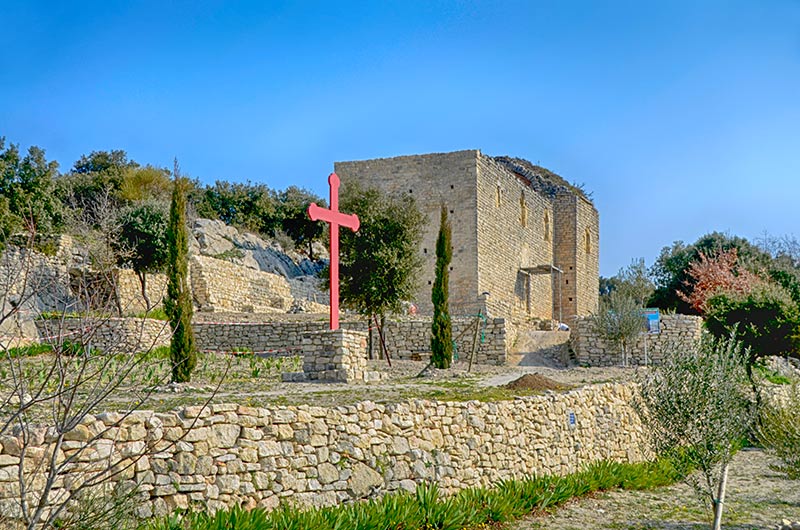Plateau des Courens
Vaucluse hiking nature and history at Beaumes de Venise
"Le plateau de Courens", Oppidum of Durbans, Prehistoric Caves of Ambrosi, Chapel Saint-Hilaire ....
Plateau of Courens: 290m altitude, hiking three hours,200 m elevation, from the village of Beaumes de Venise go to the Chapel Aubune take the track or the steep path if you are equipped to climb poles on the board by the nature trail (walking shoes and sticks) join the rock of the devil and follow the trail until discovering a flaw in the background lace along the cliffs until 6 caves of prehistoric settlements back on the shelf by the peaks south side join the oppidum with the ruins of the ancient village there are terraced gardens and several sarcophagi in the ground over the East St. Hilaire chapel is being restored (see video) this is a point ausi Add to takeoff for flight enthusiast, join Beaumes de Venise by the path,
the plateau, foothills of the Dentelles, is along one kilometer to 100 meters wide and rises to 290 meters above sea level its steep slopes to the north, south and east, make a strategic place of defense. which protects the village of Beaumes Mistral.
Ambrosi caves testify a human pésence from Prehistory these six caves by a small steep path that starts behind the chapel eaubune the rise to technical platform is the marked trail sticks walk the track as otherwise recommended by accede extimacy eastern shelf. They were first used as shelter in prehistoric times before being used as wheels quarries since the first centuries of our era. Depending on their size, these wheels are used in the oil or flour mills to grind the olives or cereals.
The oppidum Durban
village until the Revolution is perched oppidum A habitat that allows its occupants to protect themselves during troubled times. While prehistoric men and Celtic-Ligurian rather occupy the west part of the plateau, more accessible, the Gallo-Romans settled in the east. The centuries of Roman peace (I century BC -.. Fifth century AD) saw the population drop plains around Notre-Dame d'Aubune and present village of Beaumes. The oppidum is busy again in the fifth century because of the invasions.
The village of Durban, despite several destructions, lives up to the eighteenth century. It is erected in town in 1790 and is attached to Beaumes in 1811. Many remains bear witness to centuries of life At the end of the plateau are the ruins of the medieval village and the castle also named "castellas". erected between 8 th and the twelfth century by the Lords of Durban, it was destroyed in the mid-fourteenth century. A small Romanesque chapel dedicated to Saint-Michel is still visible nearby.
The Saint-Hilaire Chapel, built in the sixth or seventh century and rebuilt in the Romanesque period is currently being restored (see video). A vast necropolis of the early centuries of Christianity extends over the southern part of the plateau. Fifty graves were unearthed during archaeological excavations. On the plateau overlooking Notre Dame d'Aubune, the rock of the devil seems even balance. A tradition says that the devil wanted to destroy the chapel cons below precipitating the rock and that the Virgin would have stuck with her distaff.

